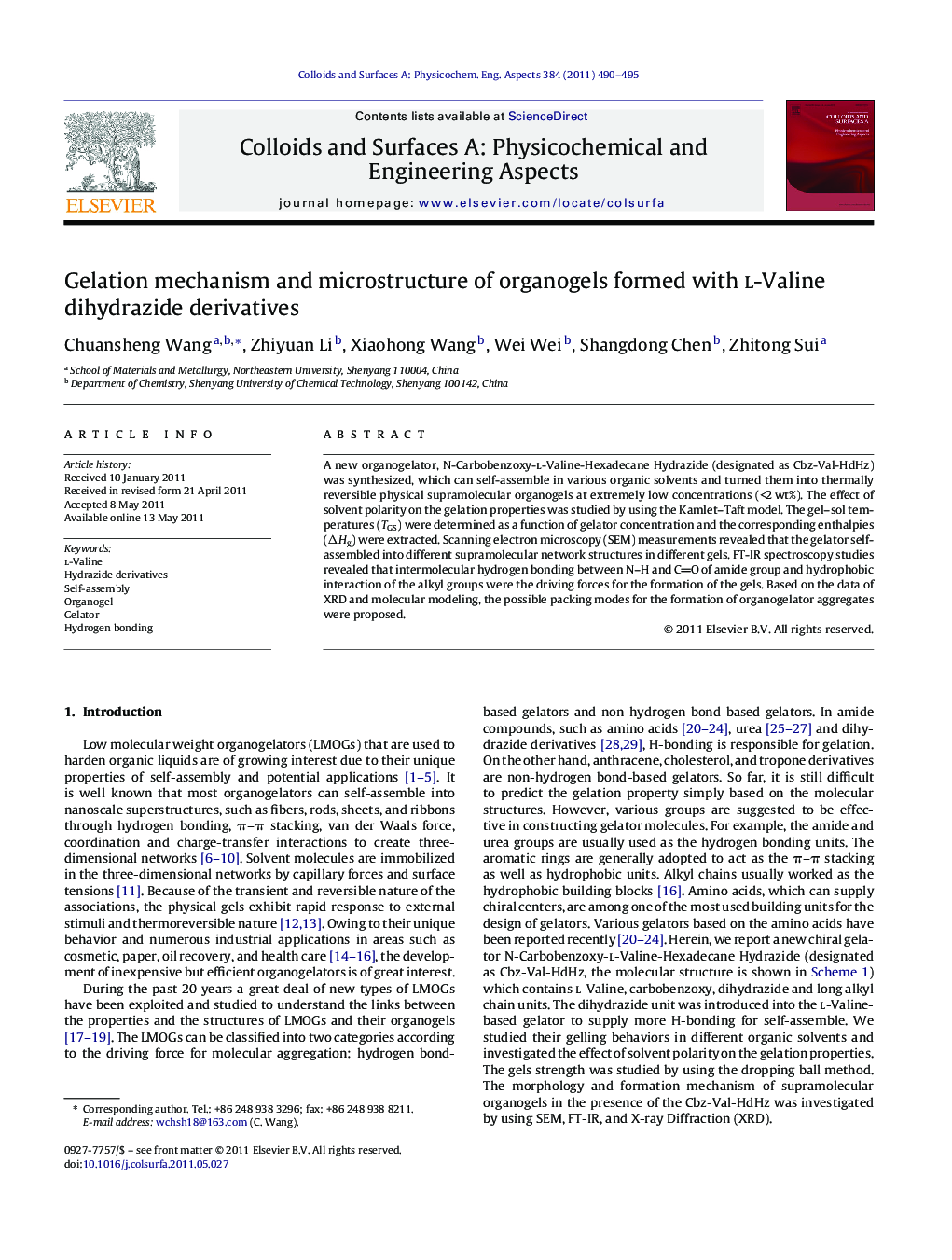| Article ID | Journal | Published Year | Pages | File Type |
|---|---|---|---|---|
| 594684 | Colloids and Surfaces A: Physicochemical and Engineering Aspects | 2011 | 6 Pages |
A new organogelator, N-Carbobenzoxy-l-Valine-Hexadecane Hydrazide (designated as Cbz-Val-HdHz) was synthesized, which can self-assemble in various organic solvents and turned them into thermally reversible physical supramolecular organogels at extremely low concentrations (<2 wt%). The effect of solvent polarity on the gelation properties was studied by using the Kamlet–Taft model. The gel–sol temperatures (TGS) were determined as a function of gelator concentration and the corresponding enthalpies (ΔHg) were extracted. Scanning electron microscopy (SEM) measurements revealed that the gelator self-assembled into different supramolecular network structures in different gels. FT-IR spectroscopy studies revealed that intermolecular hydrogen bonding between N–H and CO of amide group and hydrophobic interaction of the alkyl groups were the driving forces for the formation of the gels. Based on the data of XRD and molecular modeling, the possible packing modes for the formation of organogelator aggregates were proposed.
Graphical abstractThe possible packing modes for the lamellar structure aggregates in organic solvents.Figure optionsDownload full-size imageDownload as PowerPoint slideHighlights► A new lipophilic l-Valine derivative was synthesized as an organogelator. ► The l-Valine derivative has excellent gelation ability and the gels exhibit outstanding thermal stabilities ► The l-Valine derivative are able to self-assemble into various nanostructures in different solvents. ► the possible packing modes for organogelator aggregates was proposed.
